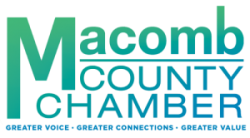From Uncertainty to Control: Risk Management Strategies for Local Entrepreneurs
In the unpredictable world of entrepreneurship, risk is not an obstacle—it’s the terrain. Smart founders don’t avoid risk; they map it, manage it, and even use it as leverage. For small and mid-sized businesses in Macomb County, understanding how to navigate financial, operational, and legal risks can mean the difference between resilience and regret.
TL;DR
-
Risk is inevitable, but manageable.
-
Identify your biggest threats early (cash flow, compliance, and reputation top the list).
-
Structure legal protection.
-
Use a simple checklist to monitor risk exposure quarterly.
-
Collaboration, insurance, and data hygiene are your best shields.
Local Perspective: The Chamber Connection
The Macomb County Chamber of Commerce has long supported local founders by connecting them with peer learning groups, legal resources, and risk awareness programs. Their events and peer networks are not just networking opportunities—they’re risk management systems in disguise. Sharing early warnings, vendor recommendations, and policy insights keeps members a step ahead of unseen challenges.
FAQ — Smart Founder Risk Questions
Q1: What’s the biggest risk early-stage founders overlook?
A: Over-reliance on one revenue stream or client. Diversify by quarter two, not year two.
Q2: How do I prepare for legal risk?
A: Maintain proper state registration, keep documents current, and designate a compliant registered agent office in Michigan. It’s the simplest way to stay in good standing.
Q3: What’s the difference between risk and uncertainty?
A: Risk can be measured and insured. Uncertainty can only be anticipated through strategy and scenario planning.
Q4: Is cybersecurity really a “founder” issue?
A: Yes. Even one data leak can bankrupt a small business. Tools like 1Password, Cloudflare Zero Trust, and Google Workspace Security Center help protect from human error and cyberattacks.
How-To: Build a Founder’s Risk Radar
Here’s a short checklist that smart founders revisit quarterly:
|
Risk Area |
What to Check |
Tools/Next Step |
|
Financial |
Are cash reserves > 3 months of expenses? |
Use QuickBooks |
|
Legal |
All licenses and filings current? |
Verify through Michigan LARA |
|
Cybersecurity |
Are employee passwords and devices secured? |
Enable multi-factor authentication |
|
People |
Are roles and responsibilities documented? |
|
|
Operations |
Any single points of failure (e.g., suppliers)? |
Create redundancy in your vendor list |
Spotlight: Asana Risk Register Template
Even small businesses face growing complexity as they scale — and that’s where Asana’s Risk Register template comes in. It helps teams identify potential issues early, rank risks by severity, and assign owners to ensure accountability. The visual dashboard lets founders track mitigation progress at a glance, keeping operations stable even when things get unpredictable.
Simple, intuitive, and collaborative — it’s one of those quiet tools that makes chaos look like strategy.
Bulleted Breakdown — Common Founder Risk Types
-
Strategic Risks → Poor market timing or scaling too soon.
-
Operational Risks → Supplier failures or process breakdowns.
-
Compliance Risks → Late filings, data misuse, or unlicensed activity.
-
Financial Risks → Insufficient liquidity, credit misuse.
-
Reputational Risks → Poor customer response, negative reviews.
-
Cyber Risks → Data loss, ransomware, phishing attacks.
Mitigation begins with awareness—most risks grow because no one’s tracking them.
Table: Founder Risk Response Framework
|
Type of Risk |
Detection Method |
Mitigation Strategy |
Example Tool |
|
Financial |
Budget variance reports |
Diversify revenue streams |
|
|
Cybersecurity |
Quarterly security scans |
Train employees & use encryption |
|
|
Operational |
Process mapping |
Document critical paths |
|
|
Human |
Feedback systems |
Conduct stay interviews |
Glossary
Risk Appetite: The amount of risk an organization is willing to accept to achieve its goals.
Mitigation: The actions taken to reduce potential impact or likelihood of a risk.
Registered Agent: A designated entity responsible for receiving legal notices on behalf of a company.
Contingency Plan: A backup plan activated when operations are disrupted.
Risk Matrix: A tool for prioritizing risks based on likelihood and severity.
Random Layout Twist: The Founder’s “What If” Game
Imagine these scenarios:
-
Your top supplier folds overnight.
-
Your website goes offline for 48 hours.
-
A client disputes a contract due to unclear terms.
Now ask:
-
What happens immediately?
-
Who’s responsible?
-
What’s your recovery plan?
If your answers are vague, your next board meeting just got its agenda.
Every founder faces risk. The smart ones design systems—legal, financial, and cultural—to contain it.
Macomb’s entrepreneurs thrive not by avoiding danger but by mastering structure. Risk management isn’t fear management; it’s freedom management.

